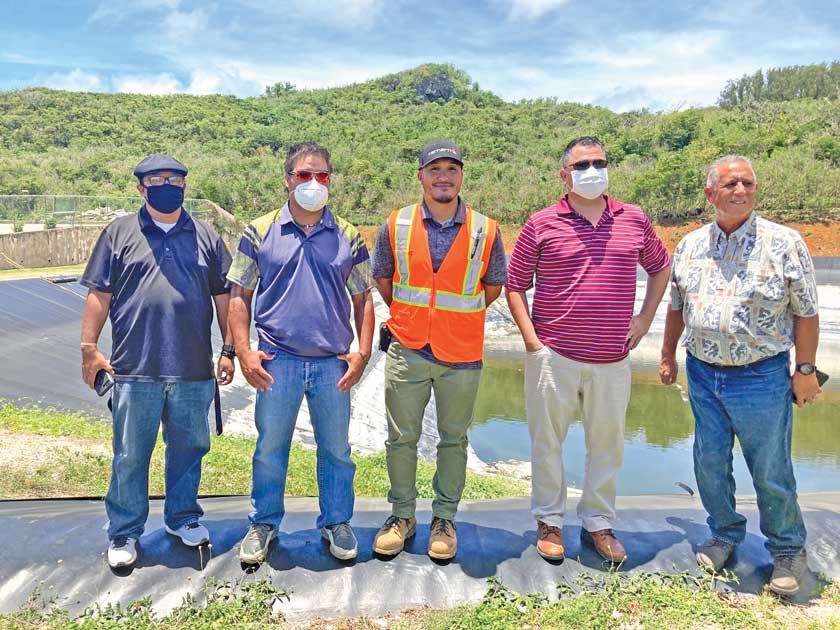New contractor gives lawmakers a tour of Marpi landfill
Members of the House Committee on Public Utilities, Transportation, and Communications drove up to Marpi last Wednesday for a tour of the landfill, now being operated by Micronesian Environment Services LLC.
Committee chair Rep. Marco Peter (R-Saipan) took his committee members on the tour so they could see firsthand how the landfill is being operated.
“I want to have my committee have a better understanding of what the actual landfill is. …With this new contractor coming in, we want to make sure that…they’re able to fulfill their duties as a contractor,” he said.
MES project officer James Benavente gave an overview of the landfill and its operations, before leading the lawmakers to different sections of the facility, from the three engineered cells, down to the leachate treatment system, as well as showing them the different equipment used in the facility.
According to Benavente, there are four basic requirements of a sanitary landfill—a full or partial hydrogeological isolation, meaning the placement of a protective barrier between soil and the groundwater; formal engineering preparations, which means that studies had to be conducted prior to building the landfill, in terms of design, location, and operations, among others; permanent proper control, where the landfill should have trained and certified personnel on site, as well as proper equipment, at all times; and a planned waste emplacement and covering, which requires that trash entering the facility be spread into its correct thickness, compacted properly, and then covered.

Members of the House Committee on Public Utilities, Transportation, and Communications—from left, Rep. Luis John Castro (Ind-Saipan), committee chair Rep. Marco Peter (R-Saipan), Rep. Ralph Yumul (R-Saipan), and Rep. Joseph Lee Pan Guerrero (R-Saipan)—pose with Micronesian Environment Services LLC project officer James Benavente, at the Marpi Sanitary Landfill Wednesday.
(IVA MAURIN)
“We like to think of the landfill as a construction site. Our operators are receiving trash, compacting it layer upon layer, technically building up something like a commercial, residential building. I also want to mention that the construction site is safe, clean, and time-efficient,” he said.
During the tour, Benavente highlighted three cells. Cell 1, the largest of the cells, is being used for over 17 years now since 2003 and is nearly full, with only a leeway of up to 8 feet before it reaches its maximum 206-foot capacity; Cell 2, which will be used next, can be used up to 15 years; and Cell 3, which is already excavated and awaiting to be lined.
Components
Benavente also explained several components of the landfill operations, such as training and certification, grounds maintenance, waste disposal, and leachate management.
“Since we’ve gone in, we’ve [graded] access roads that are higher sloped. We…leveled them to ensure that storm water is diverted away from the trash,” he said.
The operator is also required to maintain all perimeter fencing, and to erect litter control fences to catch and keep trash—plastic bags, cardboard, and paper that get caught up by the wind—from leaving the cells.
As for waste disposal, the process begins at the scale house, where vehicles are weighed for tipping fees to be determined. From there, depending on the type, the trash ends up either at the green waste disposal site, as construction and demolition waste, or as municipal solid waste, where wastes get bulldozed and compacted to save space and maximize the lifespan of the landfill.
The final component, leachate management, is basically pumping out and treating all the water that builds up in the landfill.
During the presentation, Benavente also shared with lawmakers that Micronesian Environment Services LLC’s total projected operational cost is at $69,126 per month, a $69,125 savings from the monthly average cost of $172,999.87.























